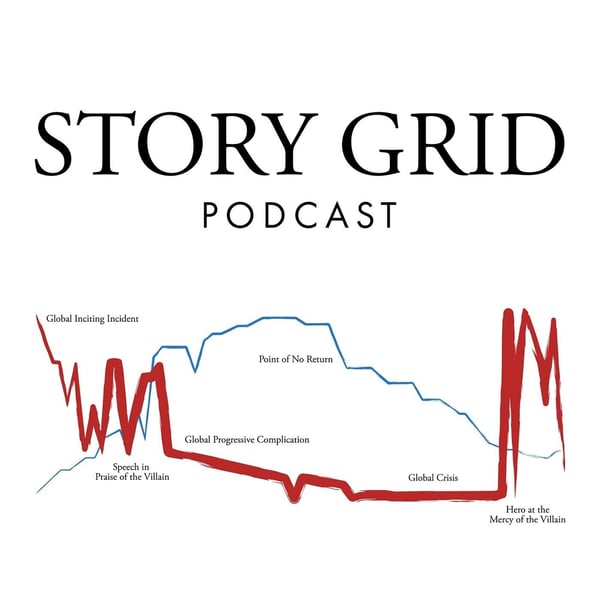Shawn rips apart Tim's scene (again)
Story Grid Writing Podcast
Shawn Coyne
4.8 • 767 Ratings
🗓️ 10 February 2016
⏱️ 57 minutes
🧾️ Download transcript
Summary
Transcript
Click on a timestamp to play from that location
| 0:00.0 | Hello and welcome to the Storygrid podcast. I'm your host Tim Graal and I am a struggling writer |
| 0:06.5 | trying to figure out how to tell a story that works. Joining me soon is Sean Coyne. He's the author of |
| 0:13.4 | the book Story Grid and the creator of the Story Grid system and he is the editor with 25 plus |
| 0:19.8 | years experience that is trying to help me avoid all the common |
| 0:23.9 | pitfalls and mistakes that new writers make. One of my favorite things about the advice that |
| 0:28.5 | Sean gives is it's always just so practical and this episode is packed full of practical advice. |
| 0:35.8 | Once again, I've written a scene and I send it to Sean and he critiques it and walks me through and along the way he gives so many specific things that writers can do to make their scenes better. So you're going to love this episode. I do want to mention here. I recorded this when I was still a little sick if you would remember I lost my voice. So my voice in this episode isn't quite as silky smooth as you are currently hearing. |
| 0:58.7 | So bear with this, but I know you're going to love the content. |
| 1:01.9 | And so we're going to jump right in and get started. |
| 1:04.6 | Okay, Sean, so I sent you another first scene of a book I'm working on. |
| 1:14.2 | I'd like to just hear your initial thoughts on it. |
| 1:14.8 | Okay. |
| 1:17.7 | Well, it's kind of dependent, of course. |
| 1:24.2 | My initial thoughts about it is that it has all those things that you need in a scene. |
| 1:27.1 | It has the Five Commandments pretty much taken care of. |
| 1:28.7 | They're all, it's all well delineated, so it's pretty obvious how to figure it out. Any layman, I think, would be able to |
| 1:34.3 | pull out the inciting incidents, some progressive complications, the crisis question, the climax and |
| 1:42.5 | the resolution. So as a scene, it absolutely works. Now, just to get a little |
| 1:50.4 | bit deeper into it, the next question you sort of want to ask yourself is, well, this is a |
| 1:57.9 | question you kind of want to start with, and after you write the scene, you want to go back to it. |
| 2:04.2 | And that is, what is the purpose of this scene? |
| 2:09.9 | Is it a, you know, like when we talk about the mathematics of storytelling, |
... |
Please login to see the full transcript.
Disclaimer: The podcast and artwork embedded on this page are from Shawn Coyne, and are the property of its owner and not affiliated with or endorsed by Tapesearch.
Generated transcripts are the property of Shawn Coyne and are distributed freely under the Fair Use doctrine. Transcripts generated by Tapesearch are not guaranteed to be accurate.
Copyright © Tapesearch 2025.

